 Stop Extension of Environment Clearance for Integrated Kashang Hydropower project in geologically fragile and ecologically diverse, tribal area Kinnaur, Himachal Pradesh!
Stop Extension of Environment Clearance for Integrated Kashang Hydropower project in geologically fragile and ecologically diverse, tribal area Kinnaur, Himachal Pradesh!
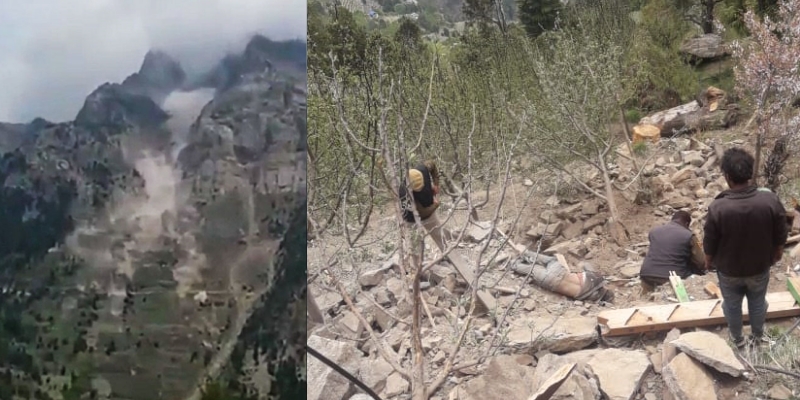
On the 30th of April 2020, a large portion of a steep mountain in Kinnaur district of Himachal Pradesh slipped down to village Pangi destroying apple orchards and killing one Nepali migrant worker. This area in the high Himalayas, falling in the Satluj Valley, which is known for its geological and ecological vulnerability, is also the site of Stage 1 of the 243 MW Integrated Kashang Hydropower Project, which is already operational. Stage II, III and IV are yet to be constructed close to the same location and have faced massive opposition from the local tribal population on the grounds that these will spell doom for their lives, livelihoods and biodiversity.
The Ministry of Environment, Forests and Climate Change had granted an Environment Clearance to the four stages back in April 2010 with the condition of a 10 year validity. Only stage I of the project has been completed and now the Himachal Pradesh Hydropower Corporation Limited is seeking an extension of the validity of the Environment Clearance from the MoEF&CC Expert Appraisal Committee, which is due to discuss the matter in its meeting dated 15th May 2020.
We are strongly appealing to the MoEF&CC EAC on River Valley Projects to NOT grant this extension so that the construction of Stage II, III and IV may be immediately dropped. We make this appeal on the following grounds:
- Hazards and Risks of large scale construction in a fragile terrain
Earthquakes, landslides and flash-floods are three of the hazards that 9 of the 12 districts of HimachaPradesh are highly prone to, Kinnaur being one of the most prone. The Integrated Kashang project is proposed in the upper reaches of Kinnaur which has dry, sandy and loose soils and steep gradients, highly prone to erosion. The website of the District Disaster Management Authority of Kinnaur acknowledges that various “unplanned construction activity, deforestation, faulty land use planning, use of explosives in construction, practicing unscientific mining, quarrying, tunneling methods, unscientific dumping on the valleys etc” are responsible for frequent slope failures.
This detailed report on the contribution of hydropower projects to the existing geological sensitivity and the human and ecological costs of such damages and hazards has already been submitted to the MoEF&CC and we put it on record here again.
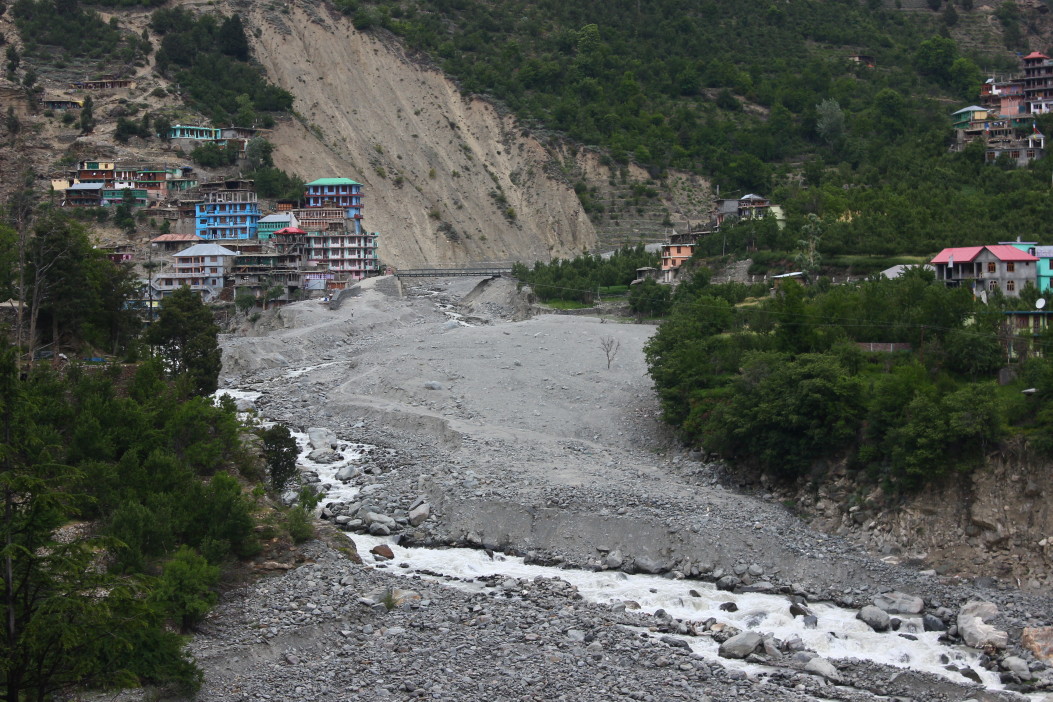
In the case of Kashang Stage-II and III the key concern is also the flash floods in a stream called Pager that have been wreaking havoc in village Lippa. The clear waters of the another nearby stream called Kerang, which meet the silt laden Pager at the foot of Lippa, play the role of flushing the silt from the Pager and thus have prevented a massive disaster so far. The Kashang stage II will divert the water of the Kerang into a tunnel and link it with the Kashang Nallah thus inviting a massive flash flood disaster for Lippa village. This has been the main contention of the tribal village of Lippa. Watch this video to understand the threat.
The Environment Impact Assessment report for the Integrated Kashang Project was made more than a decade ago. In the last ten years, there has been a large rise in the number of climate induced disasters in the region. The June 2013 disaster of Kedarnath in Uttarakhand, also occurred in this region which saw massive floods. Areas in Kinnaur where projects’ roads and tunnels have been constructed experienced landslides on an unprecedented scale during this time, especially the Kashang Project sites.
- Non-compliance of Safety and environmental laws by HPPCL in Stage-I
The most prominent landslide during the June 2013 floods was in one portion of Pangi village, which is above the underground powerhouse of the Kashang project where the road construction for the Kashang Stage-I dam site took place. In this incident 7 houses were completely damaged with several apple orchard fields. People had been demanding the company to carry out mitigation measures but no action was taken.

In the monsoon of 2018 water was released from flushing tunnel of the Stage 1 project without warning, submerging trees of deodar and near-threatened Chilgoza, simultaneously impacting vegetation and land, which together amounted for a colossal damage of Rs 17.83 crores as assessed by the Divisional Forest Officer. In response a toothless letter merely requesting the HPPCL, ‘to look into the matter and take further appropriate necessary action in the matter, please…’ was written by the administration. There is no liability or accountability for these hazards and damages.
The Himachal State Safety Cell housed in the Directorate of Energy has been approached by environment action groups several times raising issues of non-compliance of safety norms by projects like Kashang but no response has been received.
- Threats to local ecology, floral and faunal biodiversity
Adjacent to the Kashang Project area is the Lippa Asrang Wildlife sanctuary which was notified in 1974 and is spread over a total area of 30.89 hectares. The Stage-IV of the project is 50 meters from the sanctuary and stage -II and III are at 6.8 kms. According to the proposal submitted by the Wildlife division to NBWL it is mentioned that the Kerang stream is used by wild fauna for drinking. There is no doubt that with heavy construction activity and the influx of labour force in hundreds from outside it is going to negatively impact this conservation site.

The Lippa Asrang Wildlife sanctuary is an abode of some of the rare and endangered flora and fauna found in the alpine zones. In 2008 when the EIA report was prepared the following faunal species, the brown bear and the snow leopard had not been photo captured.
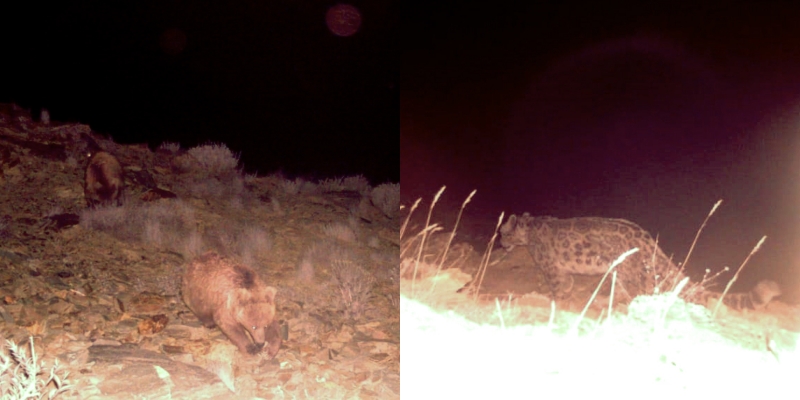
The snow leopard is an endangered species categorised as ‘Vulnerable’ under IUCN Red List and considered as Schedule-I species in Indian Wildlife Protection Act-1972. Recently a team of scientists from Wildlife Institute of India (WII) has photo captured the snow leopard in Lippa Asrang WLS that holds a global significance in its conservation (Bhattacharya et al. 2019). In addition, WII team also recorded another endangered species from Lippa Asrang WLS, a photo capture of Himalayan Brown Bear which is also a ‘Vulnerable’ species on IUCN Red List (Bhattacharya et al. 2020).
To date, around 127 species of flora have been recorded from Lippa Asrang WLS including 16 threatened plant species (Man et al. 2012). The transmission line installation across Lippa Asrang WLS would affect forest cover and also adversely impact the threatened species. The Moorang tehsil is home to the endangered Chilgoza forests (/Pinus gerardiana/) which is one of the rare tree species and has seen little success in artificial regeneration.
- Threat to local tribal livelihoods and land based economy
For Stage I, the Kashang stream which is 18 kms in length was diverted 8 kms before its confluence with the Satluj, whereas for Stage II and III (130 MW in total), the 45 km long Kerang stream will be diverted at around 15.3 kms. The Head Race Tunnel (HRT) for Stage II and III will be 6.3 kms long with its diversion point at Lappo village. This entire stretch throughout the tunnel’s length is inhabited by 8 villages-namely Pangi, Rarang, Khadra, Jungi Lippa, Aren, Tokhtu and Asrang. It will then be linked upstream to the end of Stage-I on top of Pangi village and a combined power house of 195 MW will be constructed on the right bank of Satluj opposite Purbani village.
The Integrated Kashang EIA report has identified only four affected villages namely Pangi, Lippa, Toktu and Asrang with the affected households being 253. However, this identification was seriously inadequate because it took into account only those villages whose private land is acquired for the project. More than a 1000 families in the area will get affected as a result of all the construction activity and destruction of forests and natural resources.
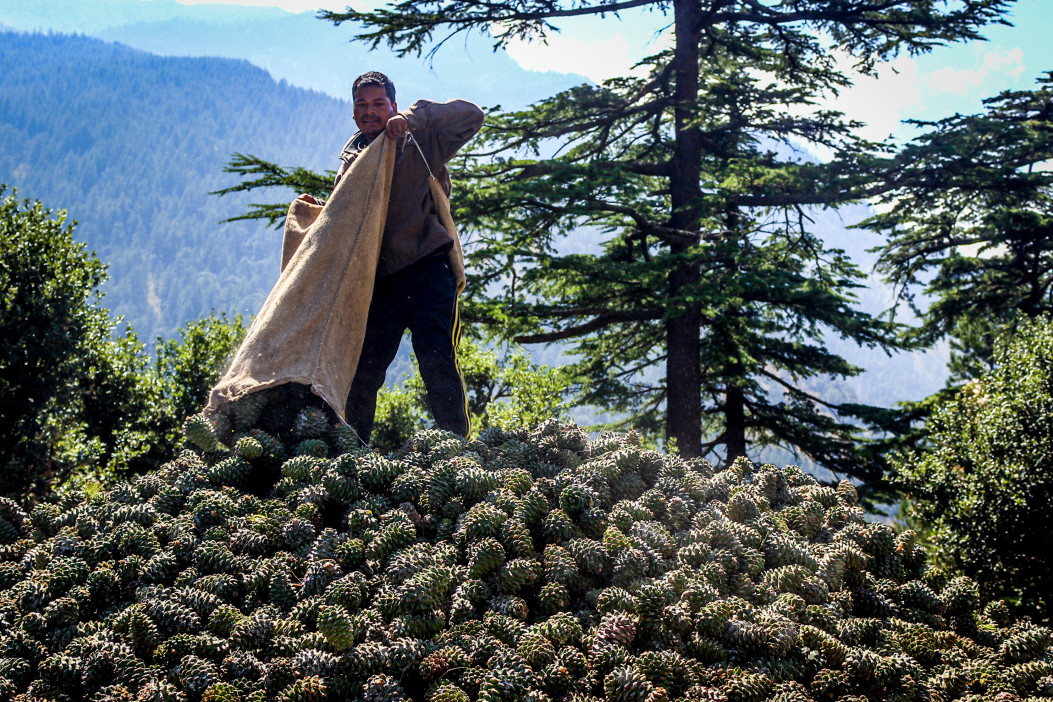
The main source of livelihood in these villages is commercial horticulture based on apple orchards and sowing of seasonal cash crops like peas, potatoes and rajma. These farms are irrigated by spring water or chashmas. The disturbance of underground springs and water aquifers reported mostly by communities in villages located in the alignment of the hydropower tunnels is considered to be a hydrogeological impact across projects. Drying of springs has been recorded by the Irrigation and Public Health department and reported in the Cumulative Environment Impact Assessment study for the Satluj river basin in interviews conducted with these officials. (page 620). The farms and orchards also stand threats from the landslides mentioned above.
Apart from private lands the impact on the common properties, mainly forests of the endangered species Chilgoza Pine and Deodar will also directly impact people. Close to 530 chilgoza trees will be felled in the 0.63 square kilometres of forest land to be cleared for the Kashang project. On an average 10,000 kilogrammes of chilgozas are collected by the community and sold for upto Rs 1000/ kg. The forest also provides fuel, fodder,food, medicinal and aromatic plants and herbs.
The forest and land based livelihoods are also closely connected with the cultural identity of this Buddhist community of tribals known as Kannauras – who inhabit this region. The tunnel will be passing under the mountain which is home to the revered Dakchompa gompa and sacred lakes. The communities fear losing this rich socio-cultural heritage. Further as mentioned above, the increased threat of landslides and flash floods is a survival issue that was not considered when this environmental clearance was first granted in 2010.
- Violation of Forest Rights Act and tribal laws
Kinnaur District is a Schedule-V area, where under PESA 1996, an NoC from the Gram Sabha (village general body) for diversion of resources towards development projects is a must. The project proponents failed to undertake this process in the proposed project area where 3 Panchayats were affected. Apart from this the process of consent viz a viz compliance to the Forest Rights Act, 2006 was also not carried out and this issue was also raised during the public consultations as part of the EIA process.
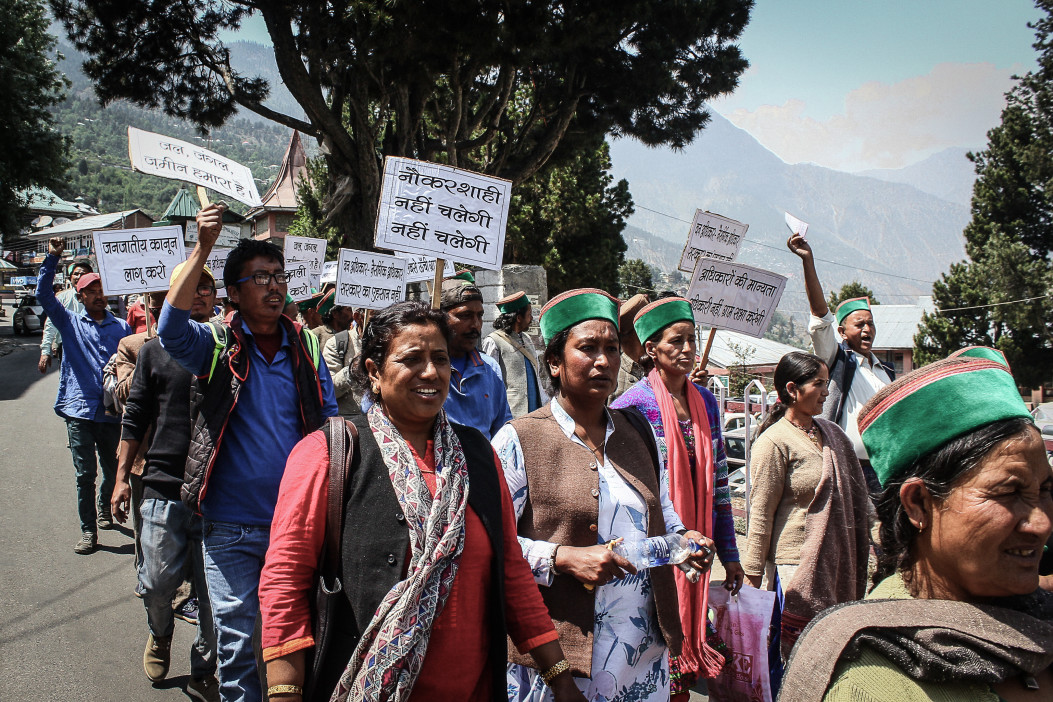
When no heed was paid to their submissions in 2011 the Lippa village challenged the Forest Clearance for the Stage II of the project on several grounds including violation under FRA 2006. In 2016 a landmark judgment by the NGT was given in favour of the petitioners stating that all community and individual claims need to be settled and the entire proposal of the Kashang project be placed before the affected gram sabhas for consideration.
The CFR claims of the Lippa Village were approved by the District Level Committee in its meeting held in August 2018. After this without obtaining the NoC from the Lippa gram sabha, the cabinet of Himachal Government executed the lease deed for proposed forest land, illegally, in November 2018. A case filed by the Lippa Gram Sabha challenging the grant of forest land lease to HPPCL without the consent of the concerned gram sabha and in violation of NGT judgement and order is now being heard in the Shimla High Court. The EAC must be aware that the matter of the NOC stands unresolved.
- Financial non-viability and economic losses of Stage 1
The hydropower sector, especially in the Himalayan region has been marred by financial losses and liabilities. A performance audit of the Integrated Kashang Project carried out by the Comptroller Auditor General in 2018 revealed that Stage 1 was completed at a cost overrun of 311.82 crore. The total estimated cost of the 4 stages was 966.21 crore and all 4 stages were to be completed by November 2015. As of November 2017 only Stage I of the project was commissioned (September 2016).
CAG auditors also observed that “the work for stage II and III was awarded (September 2010) without obtaining NOCs from local panchayat and receipt of approval for diversion of forestland” for non-forest purposes, leading to delays and overruns.
It needs to be noted that in a petition filed in the Shimla High Court by a community representative with regard to initiation of work in violation of environment and forest clearance norms, in 2010, the court had categorically stated to the project proponent “to carry out construction work at their own risk”. So the company was aware of the ‘risks’ involved and it went ahead with making the expenditures using public money without considering the legalities. The question of the rising per unit costs of hydropower need to be considered by all the agencies involved in giving a go ahead for this project.
- Cumulative Impact Assessment
The Satluj river basin has close to 100 small, medium and large projects planned on it with a potential of more than 13000 MW. 10 projects are already operational and a few are under construction. Therefore in order to assess the impact of these projects in such an ecologically sensitive area, the cumulative impact assessment was a must. In 2014 such a study was carried out for the river Satluj during which public consultations were held across Kinnaur and there was a people’s mandate against further hydropower development especially in upper Kinnaur. As part of the CEIA study the Directorate of Energy, Himachal Pradesh had set up an expert committee to give comments on the CEIA report and also be part of the stakeholder consultation process. The expert committee has resonated the views of the public but these have not been taken up by the EAC while taking decisions on CEIA as well as individual projects in the region. Moreover in the executive summary there was a point in the recommendation section that there should be no hydro projects near protected areas and in trans Himalayan regions. This project is in the trans-Himalaya region and near Lippa Asrang wildlife sanctuary.
It needs to be noted that the site of this project will also have two more tunnels planned on it at different altitudes, one for construction of Jangi-Thopan 960 MW project and another for NH-22. In toto, there would be three tunnels if we include the Kashang-Kerang link tunnel in a mountain which is already sliding down. Transmission lines being set up will lead to further deforestation and erosion.
To add to the woes of Lippa village the Indian army has asked for 40 hectares of Lippa’s forest land to build an ammunition depot at Tsering Thanga on the left bank of the Kerang River. A large open field surrounded by massive trees, Tsering Thanga is considered the home of Lippa’s ancestral deity and also the only location where the village may resettle if there is a sudden disaster due to flash floods or landslides.
In the light of the above it is clear that the Integrated Kashang Project has almost no economic benefits and humongous ecological, livelihood and social costs. Allowing the project is an invitation to more disasters in the fragile Himalayas, already bearing the load of the climate crisis. Who is and will be for the losses incurred?
